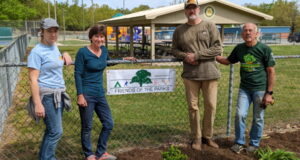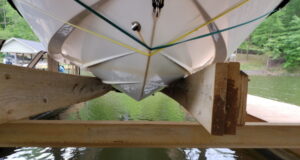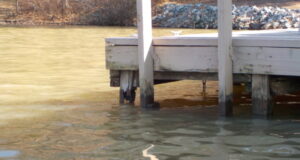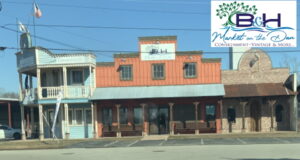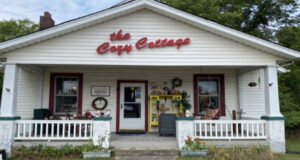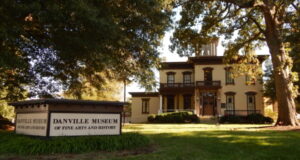By Norwood Walker
This story was published in the 2015 Summer issue of Hyco Lake Magazine.
It is perfect to get you excited about our next issue of this regional publication.
In our Summer 2020 issue you will find a story titled...
"Hyco Lake Becomes a Region"
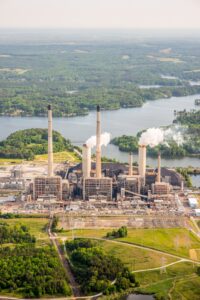 Whether you are sitting on the screened in porch of your lake house, in a restaurant or in a different town you must have some connection or interest in Hyco Lake or why would you be reading this magazine. For fifty years now Hyco Lake has been a part of the Person-Caswell county landscape. Many people have many stories and memories of the lake and its coming into being. I thought it would be fun to look back and try to share an original planning document from the early days of Hyco Lake.
Whether you are sitting on the screened in porch of your lake house, in a restaurant or in a different town you must have some connection or interest in Hyco Lake or why would you be reading this magazine. For fifty years now Hyco Lake has been a part of the Person-Caswell county landscape. Many people have many stories and memories of the lake and its coming into being. I thought it would be fun to look back and try to share an original planning document from the early days of Hyco Lake.
The following excerpt is courtesy of Hyco Lake Magazine, Volume 1, Issue 1:
“From the great turkey buzzards that loom near the lake to the four now dormant power plant stacks, Hyco Lake provides a rich history for Person County [and Caswell County], despite only dotting the landscape for nearly 45 years.” Thus, reads the first paragraph of the Person-Caswell Lake Authority’s page on the history of Hyco Lake.
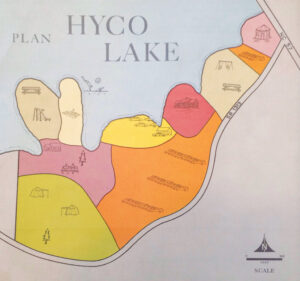 Ironic that a story should begin with the story from the first ever Hyco Lake Magazine, but a good story is always worth telling again the story of Carolina Power Lake is one of those. Wonder how many people are shaking their heads now and saying “I never heard it called that before”? That is just one little bit of information that this article brings to light, I hope. But first where does the information in this article come from?
Ironic that a story should begin with the story from the first ever Hyco Lake Magazine, but a good story is always worth telling again the story of Carolina Power Lake is one of those. Wonder how many people are shaking their heads now and saying “I never heard it called that before”? That is just one little bit of information that this article brings to light, I hope. But first where does the information in this article come from?
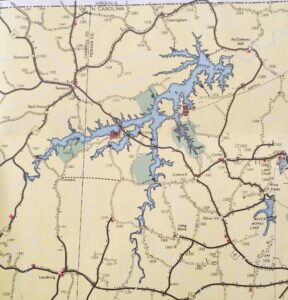 The majority of the information is from a pamphlet prepared for the Person-Caswell Lake Authority by the Division of Community Planning, North Carolina Department of Conservation and Development, Suzanne Chichester, Planner-in-Charge. This pamphlet, along with some other papers regarding Hyco Lake, was found in the office of late Roxboro lawyer George Jackson. It was through his son Burt that the document was brought to attention of the staff at the magazine. Information also is borrowed from the web site http://hycolake.com/facts.htm. and the Person-Caswell Lake Authority web site. I hope you readers can forgive the large amount of quoted material here, but the language and content of the pamphlet were just too good not to share as closely as possible. See what I mean from the introduction.
The majority of the information is from a pamphlet prepared for the Person-Caswell Lake Authority by the Division of Community Planning, North Carolina Department of Conservation and Development, Suzanne Chichester, Planner-in-Charge. This pamphlet, along with some other papers regarding Hyco Lake, was found in the office of late Roxboro lawyer George Jackson. It was through his son Burt that the document was brought to attention of the staff at the magazine. Information also is borrowed from the web site http://hycolake.com/facts.htm. and the Person-Caswell Lake Authority web site. I hope you readers can forgive the large amount of quoted material here, but the language and content of the pamphlet were just too good not to share as closely as possible. See what I mean from the introduction.
 “Change is inevitable, and it is coming in a big way to Person and Caswell counties with the advent of Hyco Lake. Awareness of the types of change to expect and how to plan for them is an extremely important factor. Without careful planning, random and unregulated development under the pressure money, people, leisure time, and mobility can permanently mar the landscape. WITH planning, these same pressures can be turned into forces for good in the area.”
“Change is inevitable, and it is coming in a big way to Person and Caswell counties with the advent of Hyco Lake. Awareness of the types of change to expect and how to plan for them is an extremely important factor. Without careful planning, random and unregulated development under the pressure money, people, leisure time, and mobility can permanently mar the landscape. WITH planning, these same pressures can be turned into forces for good in the area.”
 Very wise words from the past and that was only the introduction! The report continues to detail the past relating how then Carolina Power and Light Company was seeking to meet increasing demands for electrical power. They began purchasing land in Person and Caswell counties for a cooling lake for a proposed steam and electric generating plant in the area. The purchase of land began in 1962 and by 1965 almost 10,000 acres had been acquired. The power plant was completed and opened in May 1966. Sometime during construction of the lake, an idea for a recreation area began to take shape.
Very wise words from the past and that was only the introduction! The report continues to detail the past relating how then Carolina Power and Light Company was seeking to meet increasing demands for electrical power. They began purchasing land in Person and Caswell counties for a cooling lake for a proposed steam and electric generating plant in the area. The purchase of land began in 1962 and by 1965 almost 10,000 acres had been acquired. The power plant was completed and opened in May 1966. Sometime during construction of the lake, an idea for a recreation area began to take shape.
“In 1965, legislation was passed by the North Carolina General Assembly to enable the County Commissioners to establish the Person-Caswell Lake Authority. The Legislature gave the Authority many powers, one of which is to lease from the Carolina Power and Light Company the waters of the reservoir and a 10-foot contour strip upwards from the shoreline. The Carolina Power and Light Company further gave the authority a tract of 64 acres of land to be used for public recreation purposes.”
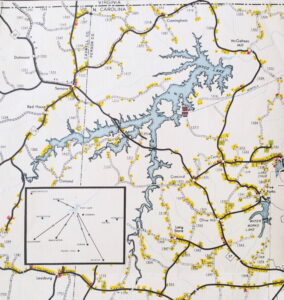 Chapter 200 House Bill 297 of the 1965 session of the North Carolina General Assembly established the guidelines the PCLA (Person-Caswell Lake Authority) would operate under. The other basic parties involved in the lake were the North Carolina Department of Environmental Management-Water Quality Division, N.C. Wildlife Commission, then Carolina Power and Light, and the PCLA. CPL the land and impounded the water and owned the land under the water up to the 420’ mark. North Carolina Department of Environmental Management basically owns the water and sets the guidelines that both CPL and the PCLA had to adhere. The Lake Authority is responsible for the management of both land and water around the lake with the NC Wildlife Commission is responsible for safety of wildlife and fish in the area. Property owners lease the right to use water front based on the guidelines that were established early on by the PCLA.
Chapter 200 House Bill 297 of the 1965 session of the North Carolina General Assembly established the guidelines the PCLA (Person-Caswell Lake Authority) would operate under. The other basic parties involved in the lake were the North Carolina Department of Environmental Management-Water Quality Division, N.C. Wildlife Commission, then Carolina Power and Light, and the PCLA. CPL the land and impounded the water and owned the land under the water up to the 420’ mark. North Carolina Department of Environmental Management basically owns the water and sets the guidelines that both CPL and the PCLA had to adhere. The Lake Authority is responsible for the management of both land and water around the lake with the NC Wildlife Commission is responsible for safety of wildlife and fish in the area. Property owners lease the right to use water front based on the guidelines that were established early on by the PCLA.
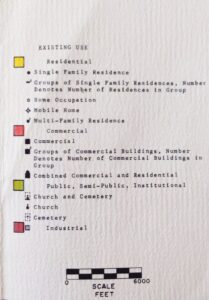 Some things have not changed very much since this pamphlet was written in the 1960’s. The lake is still 10 miles long and has an area of 3750 acres. There is still a storage capacity of about 25 billion gallons of water. But now there are more smokestacks and new technology has corrected problems warned against in the pamphlet…
Some things have not changed very much since this pamphlet was written in the 1960’s. The lake is still 10 miles long and has an area of 3750 acres. There is still a storage capacity of about 25 billion gallons of water. But now there are more smokestacks and new technology has corrected problems warned against in the pamphlet…
“…The lake level may vary up to five feet, a common occurrence in area lakes. This condition may make the lake unattractive during the times when drought and high temperatures predominate. In addition, there may be ash in the lake at times. This condition could be caused by water flowing from the ash-settling areas of the lake (see Land Development Plan). It is not a dangerous condition, but could add an unpleasant color to the water, and unpleasant deposits along the shoreline. Water may at times be uncomfortably warm for swimming.”
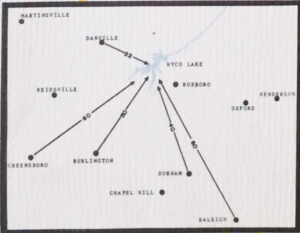 Another observation of the pamphlet concerned the development of the area once the lake was completed…
Another observation of the pamphlet concerned the development of the area once the lake was completed…
“It is evident, then, that large hotels and boat renting establishments will probably not be necessary. It can be seen that not many area residents are sufficiently prosperous to buy or rent boats or invest in summer homes or weekend homes. It is primarily for the use of these people that the 64-acre public recreation tract is being planned…”
Also speaking to development was this bit of a gem.
“Hyco Lake is surrounded primarily by tobacco and corn fields and the buildings associated with this type of farming. The farms are interspersed with a beautiful array of foliage; churches, many of which are quite old; and some very old houses. The area is indeed picturesque. However, as development begins to make itself felt, problems can be seen which, if allowed to proliferate, could irrevocably mar the landscape. Roads are even now being cut with no regard to the topography or the characteristics of the soil; mobile homes are being moved in; and shacks are being erected. The time to preserve the beauty of this area is NOW.”
The pamphlet spends a great deal of time talking about development and how it is an on-going and continuing job. I wonder what Suzanne Chichester would think of the many beautiful homes that now line much of the lake’s perimeter. I wonder if she would be surprised at the year-round residents of these homes and the summer residents that come in far beyond Person or Caswell counties’ borders. Many of her warning were obviously heeded and much thought put into residential development on Hyco Lake.
 But I am not sure at all what to make of this observation…
But I am not sure at all what to make of this observation…
“The existence of the lake will probably not cause growth in the small towns in the area, for visitors who go to the lake for the day will not need to do extensive shopping, and those whose summer homes are in the area will probably prefer to shop in larger towns where a wide range of choice is available. In fact, the need for additional facilities will probably be seasonal.”
Hyco Lake was formed in the 1960’s as a cooling reservoir to aid in the production of more energy. It is fed by three main tributaries North Hyco Creek, South Hyco Creek, and Cobbs Creek. Hurricane Hilda made sure that the lake was filled in 1965 There is an earthen dam which impounds the water in the McGhee’s Mill area with a concrete spillway which water overflows when the rain or the incoming creeks raise the water level. It takes its name from the Native American word “Hicotaminy” which means “great turkey buzzard.”
But what is Hyco Lake today? Ask a real estate agent and you may get a broad smile and a comment about still a “real hot property.” Ask a skier and you may get an answer relating to the smooth waters that make for a skier’s paradise. Ask a year-round resident and the answer may be HOME. Ask an out of town homeowner and you may hear the words escape and retirement. Ask campers and be prepared for campfire stories as most of the camping area is full at Hyco almost year-round. It is all these things and much more.
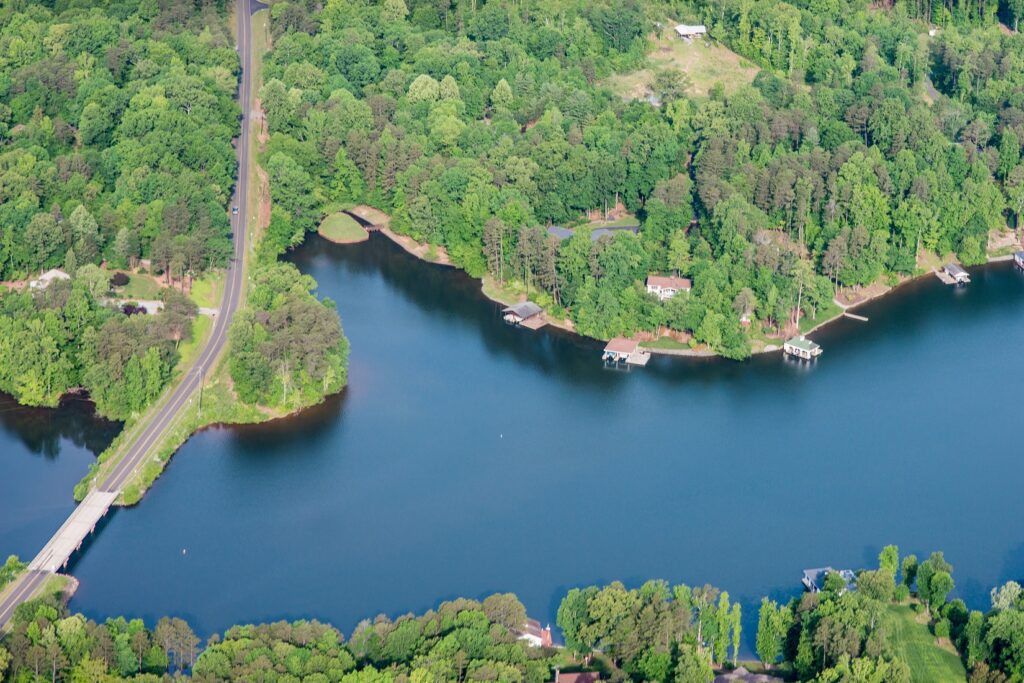 In the proposed plan for the public recreation area listed in the pamphlet were the following areas:
In the proposed plan for the public recreation area listed in the pamphlet were the following areas:
- A park which would be approximately 8 acres in size.
- Parking areas which could handle up to 1450 auto and boat trailer combinations or 2750 cars.
- Picnic grounds two which could accommodate 320 units
- Swimming and beach area to accommodate over 900 people with swimming and sun bathing areas covered with sand.
- Boat launching area of almost 4 acres.
- Food stand where snacks, provisions and souvenirs could be purchased.
- Police hut and residence.
- Camping Area, an area of 15 acres was proposed for camping.
- Meeting center. Lodge area one acre in size with all necessary facilities.
Fifty years later it seems if maybe all of these things and more have become a reality. A new disc golf course is up and soon will be hosting tournaments for players from around the country.
In its fifty years Hyco Lake has come a long way from three small creeks and a lot of tobacco land. Much of the history of this area may be underwater, but a lot of history and memories have been made since Hyco Lake was created.
But maybe it is time to take one final piece of advice from this fifty-year-old plus pamphlet…. or maybe it has already been done.
“Second an image is important---something concrete that serves to tie the lake together. One suggestion is the designing of a Hyco Lake emblem. The emblem should be attractive, unusual, simple, and colorful. Flagpoles flying the emblem would be placed on the islands, at the launch points, and at the public recreation area. The dominant color in this emblem could be repeated on the buildings and other structures owned by the Lake Authority…….”
What is your Hyco story?
 Happy Endings Publications Hyco Lake, River City Area & SoBo Halifax Magazines
Happy Endings Publications Hyco Lake, River City Area & SoBo Halifax Magazines

